The Potato in Fine Art
Do you prefer your potatoes in a landscape or in a still life or in a stew? Come with me on a tour of the humble potato in art.
Candy Bedworth 16 October 2024
Tea, a timeless beverage enjoyed by cultures across the globe, has not only warmed countless hearts but also inspired artists throughout history. From serene still-life compositions to lively scenes of social gatherings, the depiction of tea in art reflects not only cultural practices but also deeper themes of leisure, hospitality, and contemplation. In this article, we embark on a journey through the artistic representations of tea, exploring its significance and symbolism in various artworks across different periods and styles.
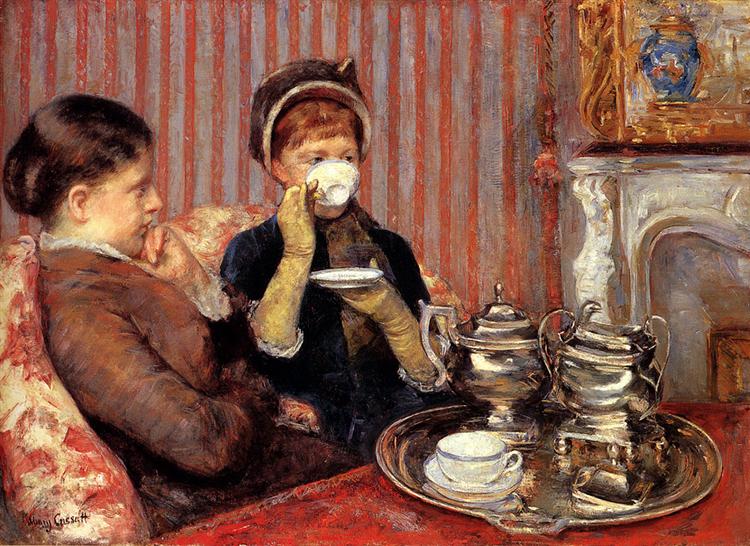
Believe it or not, tea parties were a real thing back in the day. Starting with the Victorians (oh, how much art owes you, dear Victorians!), afternoon tea was a daily event in any respectable well-off family. The fashion quickly spread from the UK to continental Europe (France, Germany, and of course the Russian Empire- just think of Chekhov’s plays), to reach the flourishing culture of the Gilded Age in the US ( the 1870s to about 1900) where affluent families used teas as debutante parties. (Is this painting a double portrait of two debutante girls trying hard not to spill the precious tea with their trembling hands? I can just imagine the stress; they seem they’re trying to look cool while in reality, they’re boiling inside.)
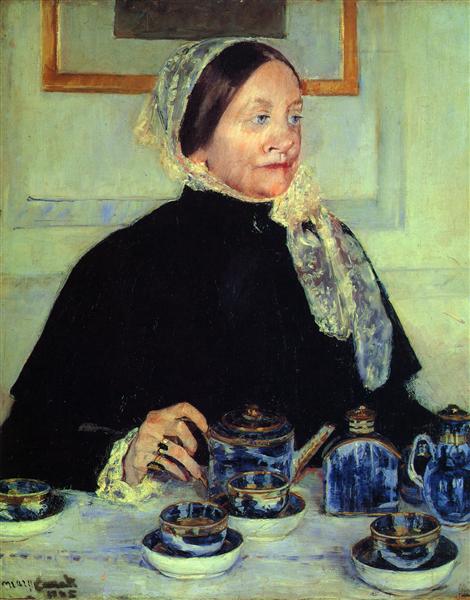
I would be pretty intimidated if at my debutante party, there was a governess like the lady above. However, I would make the sacrifice so I could have the experience of drinking tea from this wonderfully blue china tea set. I think it is no coincidence that the lady’s eyes are matching perfectly the blues of the cups – this is the epitome of style.
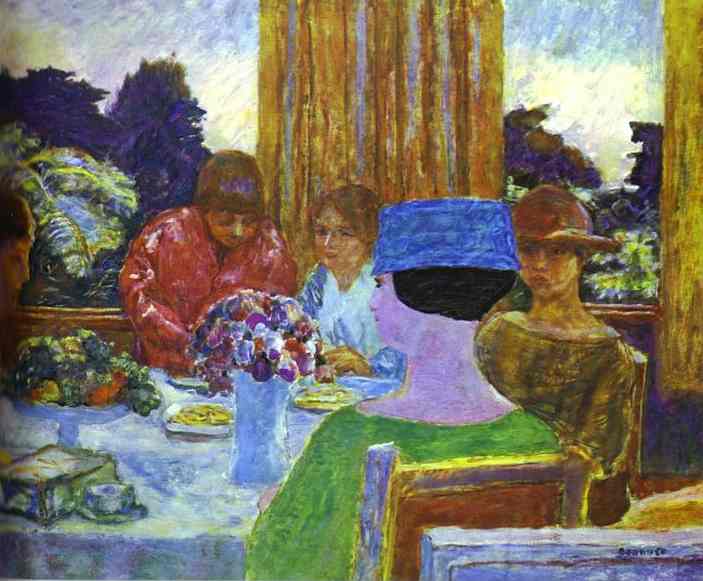
There was also a more relaxed version of the afternoon tea called “kettle drum,” a name which most probably originates from the 18th-century slang word for a vivacious party (!) and “kettle” of course for the tea. Kettle drums were more informal; guests could come and go at will, dressed in their regular day-visiting clothes. They could chat and laugh with little formality and enjoy a selection of teas, chocolates, lemonades, cakes, and sandwiches.
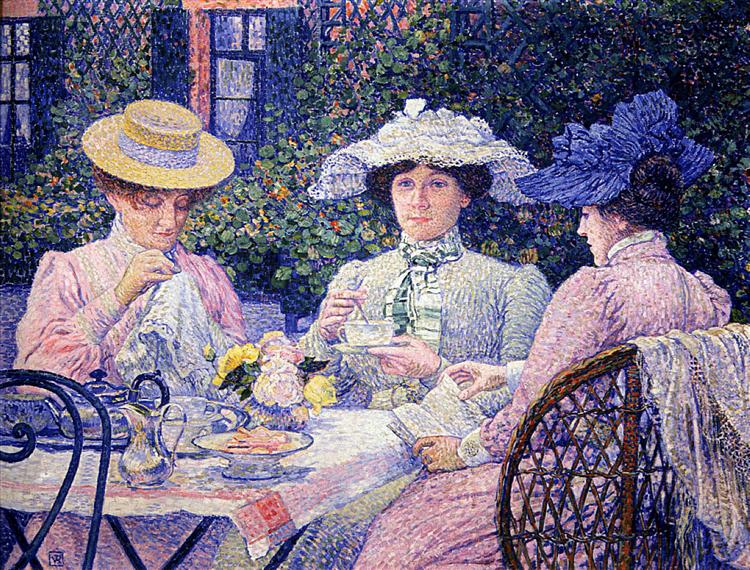
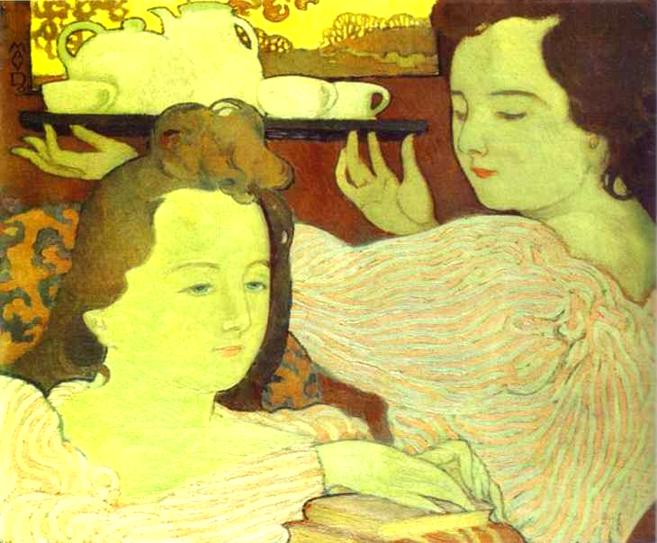
A respectable tea party didn’t end with the last cuppa, especially when it was summer or early autumn and it was still pretty warm in the English countryside. On these days, from 4 to 7 pm, fashionable families held tea dances, also called a thé dansant (French for “dancing tea”). The dances usually performed were waltzes, then after some years one could also enjoy tangos and, by the late 1920s, the Charleston. The parties spread abroad and were especially hip in the US.
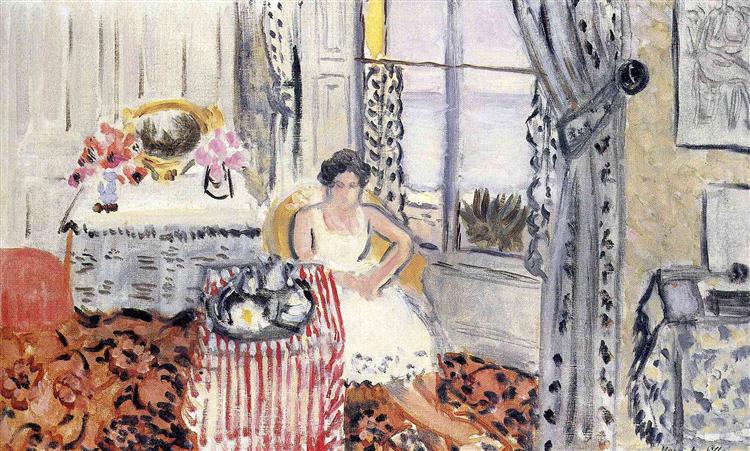
A delightful morning must include a hot cuppa with milk and sugar and a digestive biscuit (or three in my case) or a fried egg in the case of the Woman by a Window (or is it a lemon?). I wish I had her stylish apartment; in a flower-filled room, tea transforms loneliness into pleasant solitude, doesn’t it?
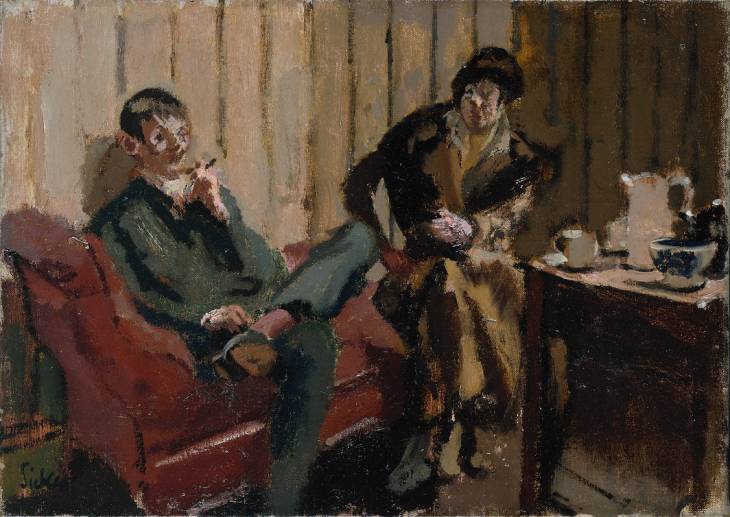
Tea is also suitable on a sad occasion, even those as serious as a broken marriage. Nina Hamnett and Roald Kristian (his real name was Edgar de Bergen) were married, but their relationship was a rather sad and complicated one. Although they both were interested in art, Hamnett being an artist in her own right, they couldn’t get along, and when in 1917 her husband was deported from London to France to fight with the Belgian army, Hamnett didn’t wait for his return. She recalled how the painting came about:
Walter, now Richard, Sickert lived in Fitzroy Street also, in fact he had a number of mysterious rooms for miles around as far as Camden Town. Edgar and I sat for him together, on an iron bedstead, with a tea-pot and a white basin on a table in front of us. We looked the picture of gloom.
Nina Hamnett, Laughing Torso: Reminiscences of Nina Hamnett, London 1932.
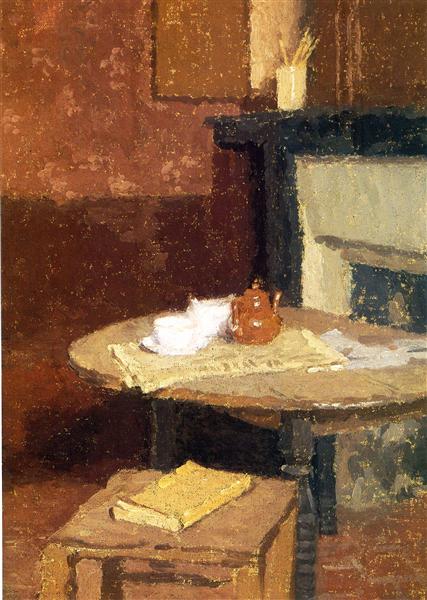
I adore works by Gwen John, who apart from having an affair with Auguste Rodin, was a fantastic portraitist and still-life painter. Living a solitary life, John mastered the art of living which nowadays we would probably call “the slow life.” I think that with images like this one, she would be an Instagram star.
DailyArt Magazine needs your support. Every contribution, however big or small, is very valuable for our future. Thanks to it, we will be able to sustain and grow the Magazine. Thank you for your help!